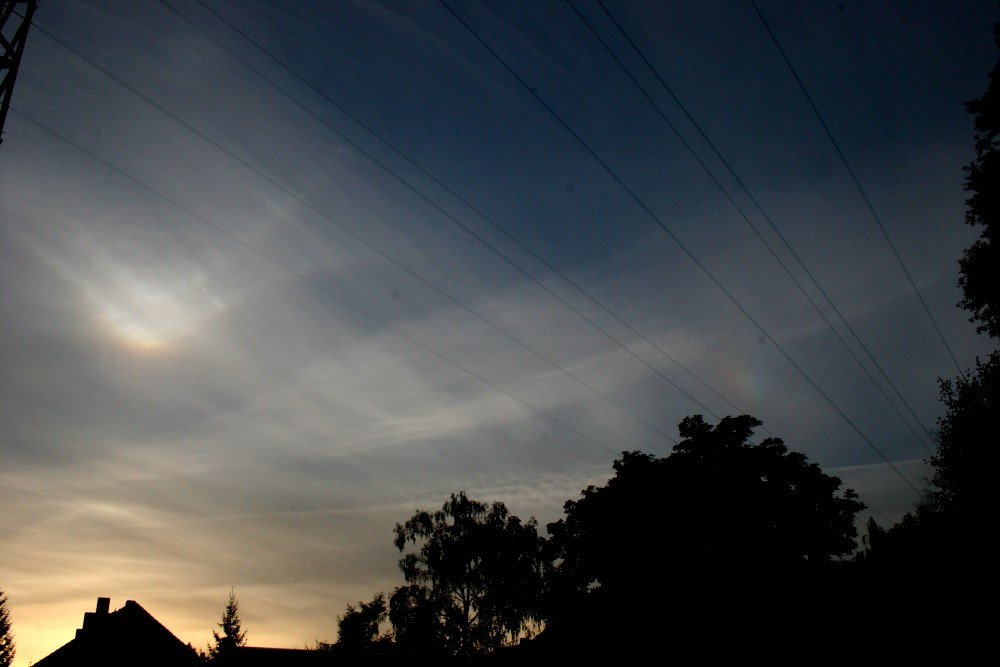
Martin Popek observed this display with Lowitz acrs on 16. September. Interesting feature is the lower Lowitz component extension above parhelion. In the simulation there is something like that, but it's very, very ghostly. The main body of the lower component below parhelion looks as if it were just a patch of 22° halo - the extension towards parhelion is missing. Same goes with the upper component. This is quite
typical way of Lowitz arcs showing up. Circular component is seen only above parhelion.
I was given sun elevation of 39° for this display but somewhat lower elevation gave a bit better simulation results. This is for 33°. The projection in the simulation is clearly not the same as in camera and this may have caused some of the broblems. Simulation is made with Halosim by Les Cowley and Michael Schroeder.
Be the sun elevation 39° or 33°, it does not change much anything fundamentally. Several question could be raised about this display with lenghty discussions. It seems we still have a long way to understanding Lowitz arcs.






